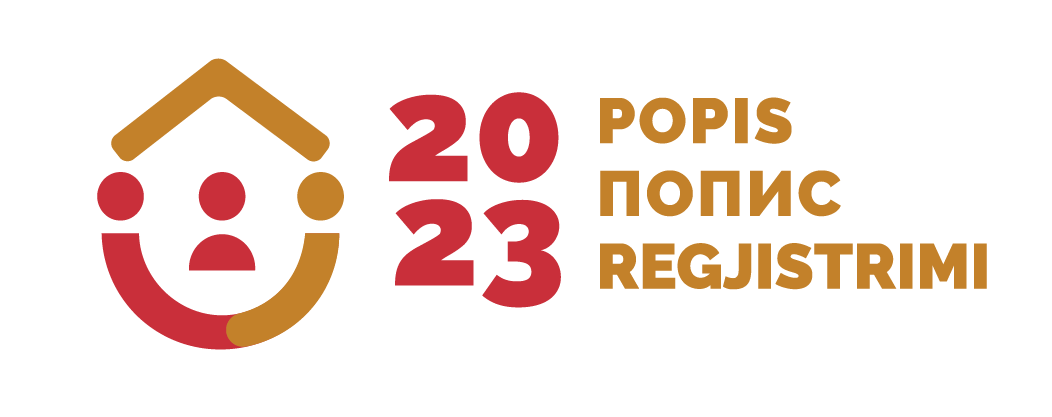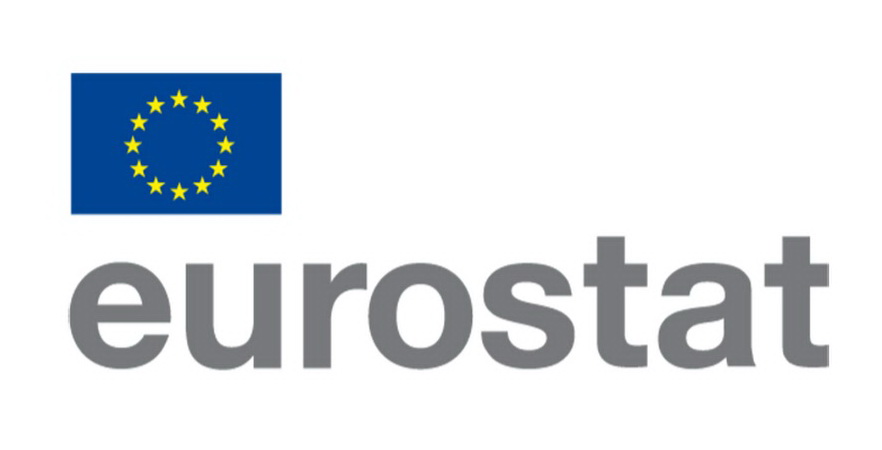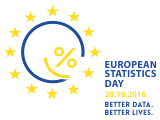| Category: |
Economic statistics |
| Area: |
Construction |
| Survey / data collection: |
Consumption of construction and propulsion materials |
Note: For any question on metadata, please contact MONSTAT metadata support.
| 1. Contact Vrh |
| 1.1. Contact organization: |
Statistical Office of Montenegro - MONSTAT |
| 1.2. Contact organization unit: |
Department for Short-term Indicators |
| 1.2. Contact organization unit: |
IV Proleterske 2, 81000 Podgorica, Montenegro |
| 2. Metadata update Top |
| 2.1. Metadata last certified: | 17 November 2023 |
| 2.2. Metadata last posted: | 29 December 2023 |
| 2.3. Metadata last update: | 17 November 2023 |
| 3. Statistical presentation Top |
| 3.1. Data description: | The aim of survey is to collect the data necessary for the calculation of quantity and value of building and drive material spent. The data will be available at the product group by type of material. |
| 3.2. Classification system: | Nace Rev.2 |
| 3.3. Sector coverage: | Reporting units of survey on construction activities are enterprises with 5 and more employees which are registered in sector F - construction (area 41, 42, 43) according to the classification NACE Rev.2 and enterprises (KAU) which are not registered in sector F, but whose local units perform the construction works and for this purpose the material:
1. For the construction of buildings;
2. For maintenance and repair of mechanical and vehicle fleet;
3. The operation of machinery and rolling stock, and firewood;
4. Office and other auxiliary materials. |
3.4. Statistical concepts and
definitions: | The subject of survey are the quantity and value of spent construction and propulsion material. The quantuty of spent materials are included in the unit of measure that is most frequently applied in practice. The consumption of construction and propulsion materials is presented for the total construction enterprise submitting the report, including also the consumption of electricity and material for heating for joint services. Non-construction enterprises report the consumption of building material only for business units, as well as the consumption of fuel and other material for their needs. The type of material is presented based on the records kept by material accounting, regardless if the reporting unit purchased or produced the material by itself. |
| 3.5. Statistical unit: | Observation units are enterprises in the field of civil engineering and construction company which is not the main activity and for this purpose use the material for construction of facilities for maintenance, repair and operation of machinery and rolling stock, and firewood for stationery and other supplies. |
| 3.6. Statistical population: | The 2022 sample comprised 131 enterprises with primary and secondary activity in the construction. |
| 3.7. Reference area: | Montenegro |
| 3.8. Time coverage: | Data on consumption of construction and propulsion materal are available since 2006 |
| 3.9. Base period: | Reference year |
| 4. Unit of measure Top |
| Values are expressed in thousands of Euro, while the quantity is expressed in piece, thous.pcs, thous.m, t, m?, m?, kg, roll, l, MWh. |
| 6. Institutional mandate Top |
6.1. Legal acts and other
agreements: | The Law on Official Statistics and Official Statistical System (Official Gazette of Montenegro No 18/12, 47/19) defines provisions for collection, processing, and dissemination of data. The Law provides to the Statistical Office legal powers to collect and access the data necessary for the implementation of Programme and Annual Plan. The Law gives a priority to the use of administrative data and right of access to individual data that are a result of survey of other official statistical producers. As an annex to legal provisions, Statistical Office has signed several memoranda on cooperation with administrative data providers. |
| 6.2. Data sharing: | Signed agreement on cooperation with the official statistical producers:
1. Revenue and customs administration
2. Ministry of Finance and Social Welfare
3. Central Bank of Montenegro
4. Trilateral agreement (MONSTAT, Ministry of Finance, and Central Bank of Montenegro)
International institutions:
1. EUROSTAT
2. UN organizations
3. IMF
4. World Bank |
| 7. Confidentiality Top |
| 7.1. Confidentiality - policy: | Articles 53-60 of the Law on Official Statistics and Official Statistical System (Official Gazette of Montenegro No 18/12, 47/19) provide a framework for protection, use, and transmission of confidential data. MONSTAT has produced two comprehensive rulebooks that cover the procedures for individual data protection as well as keeping individual records. With purpose of the meeting legal framework on functioning of security system and statistical confidentiality there was adopted the Rulebook on Keeping Statistical Data by which Manner, Time, Technical Conditions and Organization of Statistical Data Storage to Prevent Their Destroying, Misappropriation, and Unauthorized Use is Regulated as well as the Rulebook on Contents and Manner of Keeping Records on Users of Individual Statistical Data by which contents and manner of keeping records on users of individual statistical data is regular.
Pursuant to the Article 59, an access to the confidential data is limited to persons performing duties and tasks of official statistical producer and up to the stage the data are necessary for official statistical production. Persons that performs duties and tasks within official statistical producers must sign the statement on respecting the principle of confidentiality.
Law on Official Statistics and Official Statistical System is aligned with the Regulation No 223/2009 and the Regulation (EU) 2015/759 from 29 April 2015 that also regulate confidentiality provisions.
The Government of Montenegro adopted the Statement on Commitment of Confidence in Official Statistics (Commitment of Confidence). |
7.2. Confidentiality - data
treatment: | Statistical Office staff members sign confidentiality statement on respecting data confidentiality, and for any deliberate violation of statistical data confidentiality, important legal measures are envisaged. Article 54 of the Law on Official Statistics and Official Statistical System of Montenegro (Official Gazette of the Republic of Montenegro No 18/12, 47/19) regulates that data collected, processed, and stored for purpose of official statistics shall be considered confidential if they allow reporting units to be identified, either directly or indirectly, thereby disclosing individual information. The reporting unit directly identified means the identification of a reporting unit from its name or address, or from assigned identification number. Indirect identification means the identification of a reporting unit by the deduction, having into account all measures to identify a reporting unit. Data for the use of which reporting units gave explicit approval shall not be considered confidential. |
| 8. Release policy Top |
| 8.1. Release calendar: | The Law on Official Statistics and Official Statistical System (Official Gazette of Montenegro No 18/12, 47/19) stipulates that official statistical producers prepare, update, and publish Statistical Release Calendar. It is published on the website of Statistical Office not later than 20 December for the next year, for all official statistical producers that includes date of releasing statistical data. Any change in date of releasing in the Calendar is published in advance in accordance with the Procedure on Unplanned Revisions. |
| 8.2. Release calendar - access: | https://monstat.org/uploads/files/O%20NAMA/Kalendar2022_eng.pdf |
| 8.3. User access: | General aim of official statistical producer is to meet the needs of users, and to make an access to statistical data to users in an understandable manner, simultaneously and under the same conditions. Statistical Office is obliged to produce and disseminate official statistics in objective, transparent and professional manner, so that all users are equally treated. |
| 10. Accessibility and clarity Top |
| 10.1. News release: | Data are available on the website: https://www.monstat.org/eng/page.php?id=510&pageid=35 |
| 10.2. Publications: | Statistical Office publishes the following regular publications: 1. Statistical Yearbook, 2. Montenegro in figures, 3. Monthly statistical review. In addition to the above regular ones, Statistical Office publishes also additionally publications. Some of the most important additional publications are as it follows: 1. Women and Men in Montenegro, 2. The most often used statistical data All publication published by Statistical Office are available at the following link: http://monstat.org/eng/publikacije.php |
| 10.3. Online database: | http://195.66.179.231/PXWebEng/pxweb/en/Short-term%20indicators/?rxid=7fa17ab3-0d2e-46f4-ac7f-dbe053d3dfc9 |
| 10.4. Micro-data access: | The Law on Official Statistics and Official Statistical System (Official Gazette of Montenegro No 18/12, 47/19) regulates rules under which external users can obtain an access to individual data for needs of research. Article 58 defines types of scientific and research organizations that can obtain such data. Providing individual data without identifier is possible only upon a written request of scientific and research institutions, with purpose of performing scientific and research activities as well as international statistical organizations and statistical producers from other countries.
Research entity signs the agreement with Statistical Office, and it signs the statement on respecting the confidentiality principle.
Official statistical producers keeps a separate records on users and purpose of using the statistical data given to these users. |
| 10.5. Other: | Not relevant |
10.6. Documentation on methodology:
domain: | A statement of methodology is available on website: http://monstat.org/uploads/files/gradjevinarstvo/Potro%C5%A1nja%20gra%C4%91evinskog%20i%20pogonskog%20materijala/Methodology_Consumption%20of%20construction%20and%20propulsion%20materials_2021.pdf |
| 10.7. Quality documentation: | The Law on Official Statistics and the Official Statistical System ("Official Gazette of Montenegro" No. 18/12 and 47/19) defines the commitment to quality, which ensures that producers of official statistics in Montenegro work and cooperate in accordance with international principles of quality of the statistical system.
In accordance with the ESS Quality Declaration, Article 338 of the Treaty on the Functioning of the EU, Regulations 759/2015 and 223/2009 and the European Statistics Code of Practice, the following documents are adopted:
1. Quality Strategy of the Statistical Office
2. Guide for the implementation of the Quality Strategy in the Statistical Office;
3. Implementation plan |
| 11. Quality management Top |
| 11.1. Quality assurance: | Statistical Office has chosen the implementation of elements of TQM (Total Quality Management) model that foster development and improvement of functioning of:
- Institution,
- Official statistical result production, and
- Individual.
Within middle-term deadline, Statistical Office has chosen the TQM implementation through the following objectives:
1. Strong commitment to users and other interested parties,
2. Quality statistical processes and products,
3. Professional orientation of staff members,
4. Constant improvements,
5. Reduction of overburden of reporting units. |
| 11.2. Quality assesment: | The quality of the survey on consumption of construction and propulsion materials is assessed to be high. Further work is ongoing to improve the quality and in particular comparability of data. |
| 12. Relevance Top |
| 12.1. User needs: | International users:
- Eurostat,
- World Bank,
- UN organizations,
- International Monetary Fund
National users:
- Ministries and other public administration bodies,
- Local government, and
- Other local government bodies.
- Central bank,
- Non-governmental organizations,
- Students,
- Researchers,
- Media. |
| 12.2. User satisfaction: | The Statistical Office has adopted the Quality Management Strategy, the Guidebook to the Implementation of the Quality Management Strategy, as well as the Plan for the Implementation of the Quality Policy.
In order to measure the degree to which fulfills obligations towards users and within the new quality policy, the Statistical Office conducted User satisfaction survey.
The results of the survey are available on the Statistical Office website, link: https://www.monstat.org/uploads/files/kvalitet/2.%20Izvjestaj%20o%20zadovoljstvu%20korisnika%20-%202022_FINAL%20engleska.pdf |
| 12.3. Completeness: | The survey is consistent with national requirements. |
| 13. Accuracy and reliability Top |
| 13.1. Overall accuracy: | The results of survey consumption of construction and propulsion materials are based on a sample of reporting units and are subject to the usual types of errors associated with sampling techniques, as well as non-sampling errors, measurement errors, processing errors and non-response. |
| 13.2. Sampling error: | Survey on consumption of construction and propulsion materials is done on a sample basis. Included are enterprises and KAU with 5 and more employees who are registered in sector F according to the classification NACE Rev.2. The sample includes all reporting units from the class 2 and 3 (50 and more employees), while reporting units from class 1 is selected by random samle. |
| 13.3. Non-sampling error: | Non-sampling errors are tied to other errors that are not related to the sample. Non-sampling errors include: Coverage errors, Measurement errors, Processing errors and Non-response errors. |
| 14. Timeliness and punctuality Top |
| 14.1. Timeliness: | The data are published 9 months after the end of the reference period. |
| 14.2. Punctuality: | Deadlines for publishing have been complied in accordance with the Statistical Release Calendar. |
15.3. Coherence - cross
domain: | In some cases, data from other areas of economic statistics can be used for cross-checking of data. |
| 15.4. Coherence - internal: | Data is internally coherent. |
| 17. Data revision Top |
| 17.1. Data revision - policy: | Statistical Office has adopted the revision policy and it is available on the website http://www.monstat.org/eng/page.php?id=1411&pageid=1411 |
| 17.2. Data revision - practice: | Tipical revisions are minimal. Significant revisions have only been made to reflect changes in methodology. |
| 18. Statistical processing Top |
| 18.1. Source data: | The reporting units are enterprises which are registered in sector F according to NACE Rev.2 classification and enterprises whose construction is a secondary activity. The list of companies is taken from the Business Register. |
18.2. Frequency of data
collection: | Data are collected annualy. |
| 18.3. Data collection: | Data are collected by questionnaires (by post, email or fax) |
| 18.6. Adjustment: | Not available |







